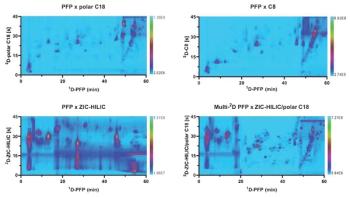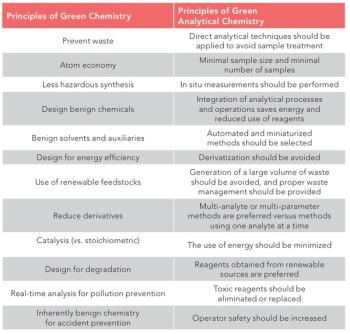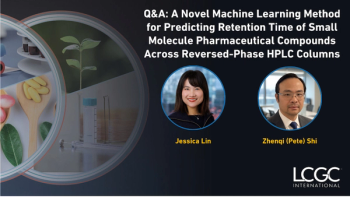
Green Analytical Approaches for Contaminant Analysis
As the push for green chemistry continues to grow, University of Almeria researchers created a review for ways chromatographic techniques could be more environmentally friendly.
Scientists from the University of Almeria in Almería, Spain recently published a review on how environmentally friendly approaches to traditional chromatography techniques for contaminant analysis can be improved for the future, publishing it in the Journal of Chromatography A (1).
Green chemistry is a discipline that aims to minimize the environmental impact of chemical production and usage. Key advancements in this field include reducing solvent use, minimizing toxicity through automation and miniaturization, and developing solvent-free methods. In the early 2000s, Green Analytical Chemistry (GAC) was identified as a necessary aspect of green chemistry, viewed as a necessary development of conventional analytical chemistry instead of a new discipline (2).
The need to analyze contaminants for safety and public health has driven advances in analytical techniques; however, it is also important to ensure that the methods themselves are not contributing to environmental harm. As global initiatives continue pushing for greener procedures, laboratories must continue meeting regulatory demands while minimizing their ecological impact. Transitioning to green analytical techniques must ensure that sustainable methods meet or exceed the performance standards of traditional approaches. Achieving similar limits of quantification, accuracy, and reliability is crucial for maintaining scientific and regulatory standards without compromising efficiency. This requires the scientific community to be constantly dedicated to evaluating and optimizing green methods to ensure they can effectively replace conventional methods.
In this review, the scientists explored various chromatographic techniques that align with green chemistry principles, offering environmentally friendly alternatives to traditional approaches. Techniques, such as supercritical fluid chromatography (SFC), miniaturized liquid chromatography (LC), and gas chromatography (GC) with alternative carrier gases, were discussed for their ability to reduce solvent consumption, minimize waste, and improve operational efficiency.
Various studies have been done to address the environmental capacity of chromatographic techniques. For example, while completely eliminating sample preparation from chromatography is not always practical, some have proposed solventless extraction techniques as alternatives (3). In GC, helium could be replaced as a carrier gas, seeing how it is a non-renewable resource. Further, low thermal mass technology use can offer energy savings.
While these techniques come with advantages, there are still changes with properly using them. While using alternative carrier gases in GC has shown potential in reducing dependence on substances such as helium, this typically leads to less sensitivity. Lower detection sensitivity can hinder the performance of techniques like GC–mass spectrometry (MS) in detecting trace-level contaminants. To counteract this, researchers must carefully optimize analytical parameters to strike a balance between sustainability and analytical rigor. These techniques show great promise, but ongoing improvements are vital for making them fully competitive with traditional methods in all applications.
In the future, successfully integrating green chromatographic techniques into routine laboratories will require collaboration between researchers and instrument manufactures. By refining system designs, optimizing operational parameters, and developing robust applications, greener and more sustainable practices can be conducted without compromising on performance. These will help ensure that eco-friendly alternatives can keep evolving and that laboratories can adopt new methods that align with regulatory standards and environmental responsibility.
References
(1) Cutillas, V.; Ferrer, C.; Martínez-Bueno, M. J.; Fernández-Alba, A. R. Green Analytical Approaches for Contaminants: Sustainable Alternatives to Conventional Chromatographic Methods. J. Chromatogr. A 2025, 1750, 465921. DOI:
(2) Langford, V. S.; Perkins, M. J. Fast, Sustainable Methods for Volatiles Analysis: Automated SIFT-MS. LCGC International 2025.
(3) Płotka, J.; Tobiszewski, M.; Sulej, A. M.; Kupska, M.; et al. Green Chromatography. J. Chromatogr. A 2013, 1307, 1–20. DOI:
Newsletter
Join the global community of analytical scientists who trust LCGC for insights on the latest techniques, trends, and expert solutions in chromatography.




